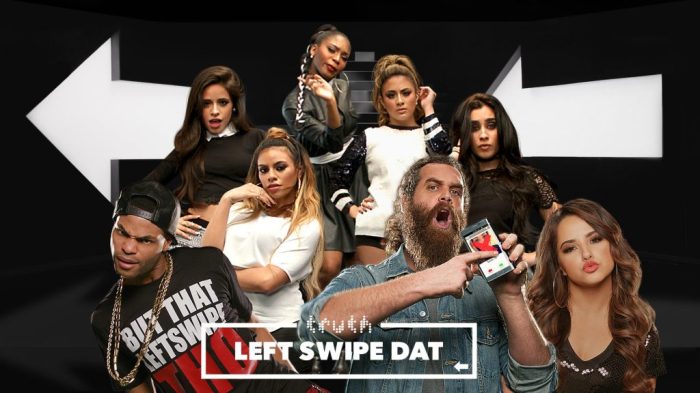
Influencer marketing advertising campaigns set the stage for this enthralling narrative, offering readers a glimpse into a story that is rich in detail and brimming with originality from the outset. From exploring successful campaigns to dissecting key strategies, this topic delves into the dynamic world of influencer marketing with a focus on creativity and innovation.
As we navigate through the different types of influencers, the nuances of collaborations, measuring success and ROI, planning advertising campaigns, and the role of advertising services, prepare to embark on a journey that unveils the power and potential of influencer-driven advertising in today’s digital landscape.
Influencer Marketing Advertising Campaigns
Influencer marketing in advertising campaigns involves collaborating with individuals who have a significant following on social media platforms to promote a brand or product. These influencers are seen as experts or trendsetters in their respective niches, making their recommendations or endorsements highly valuable to brands.
Examples of Successful Influencer Marketing Campaigns
Some successful influencer marketing campaigns include:
- Fashion Nova partnering with various influencers to showcase their clothing lines.
- Daniel Wellington collaborating with influencers to promote their watches.
- SugarBearHair working with celebrities on Instagram to endorse their hair vitamins.
Benefits of Using Influencers in Advertising
Increased credibility
Influencers are seen as more authentic and trustworthy than traditional advertising methods.
Reach a specific target audience
Influencers have followers who are interested in their niche, making it easier to target a specific demographic.
Higher engagement
Followers of influencers are more likely to engage with sponsored content compared to traditional ads.
Key Strategies for Creating Effective Influencer Marketing Campaigns
- Identify the right influencers: Choose influencers whose values align with your brand and have an engaged following.
- Set clear goals and objectives: Define what you want to achieve with the campaign and communicate it clearly to the influencer.
- Create authentic content: Allow influencers creative freedom to promote your brand in a way that resonates with their audience.
- Measure results: Track key performance indicators to evaluate the success of the campaign and make adjustments as needed.
Types of Influencers
In influencer marketing campaigns, different types of influencers are used to reach target audiences effectively. These influencers have distinct characteristics that make them suitable for specific advertising campaigns.
Micro-Influencers
Micro-influencers are individuals with a smaller following, typically ranging from 1,000 to 100,000 followers on social media platforms. They are known for having a highly engaged and loyal audience within a specific niche. Micro-influencers often have a more personal connection with their followers, making their recommendations and sponsored content more authentic and trustworthy. They are effective in driving engagement, building brand awareness, and generating conversions among niche audiences.
Macro-Influencers
Macro-influencers, on the other hand, have a larger following, usually exceeding 100,000 followers on social media. They are popular figures such as celebrities, industry experts, or social media personalities with a wide reach. Macro-influencers have the ability to reach a broader audience and create massive brand exposure. While they may lack the personal touch of micro-influencers, they can significantly impact brand visibility and awareness on a larger scale.
Choosing the Right Influencer
When selecting the right influencer for an advertising campaign, it is essential to consider the campaign’s goals, target audience, budget, and brand fit. Micro-influencers are ideal for niche campaigns that require authenticity and engagement, while macro-influencers are suitable for campaigns aiming for broad reach and visibility. Collaborating with influencers whose values align with your brand and who have a genuine connection with their followers can maximize the campaign’s effectiveness.
Influencer Collaboration and Partnerships
Influencer collaboration and partnerships play a crucial role in the success of advertising campaigns. By working together, influencers and brands can create authentic and engaging content that resonates with their target audience.
Importance of Collaboration
Collaboration between influencers and brands allows for the creation of unique and compelling content that is more likely to capture the attention of consumers. Influencers bring their creativity and authenticity to the table, while brands provide resources and support to amplify the message.
- Collaboration enhances credibility: When influencers partner with brands that align with their values, it enhances their credibility in the eyes of their followers.
- Increased reach: By partnering with influencers who have a dedicated following, brands can reach a larger audience and improve brand awareness.
- Authenticity: Influencers can help brands connect with consumers in a more authentic and relatable way, leading to higher engagement and trust.
Forming Partnerships
The process of forming partnerships with influencers for marketing campaigns involves identifying the right influencers, reaching out with a collaboration proposal, negotiating terms, and co-creating content that aligns with both the influencer’s style and the brand’s message.
It is essential to establish clear communication and expectations from the outset to ensure a successful partnership.
Successful Collaborations Examples
Some successful brand-influencer collaborations include:
- Adidas and Kylie Jenner: Kylie Jenner’s collaboration with Adidas for their Falcon sneaker line led to a sell-out success, showcasing the power of influencer marketing.
- Dior and Chiara Ferragni: Dior partnered with influencer Chiara Ferragni for a limited edition capsule collection, which generated significant buzz and sales.
- Glossier and Emily Weiss: Glossier’s founder, Emily Weiss, leveraged her personal brand as an influencer to launch a successful skincare and makeup line.
Impact of Long-Term Partnerships
Long-term partnerships between brands and influencers can lead to deeper connections with the audience, increased brand loyalty, and sustained growth in sales over time. In contrast, one-off campaigns may provide a short-term boost but lack the lasting impact of ongoing collaborations.
Measuring Success and ROI

In the world of influencer marketing, it is crucial to have a clear understanding of how to measure the success of your campaigns and determine the return on investment (ROI). By tracking key performance indicators (KPIs) and utilizing the right tools, you can optimize your influencer collaborations for maximum impact.
Key Performance Indicators (KPIs)
- Engagement Metrics: Monitor likes, comments, shares, and overall interactions on influencer posts to gauge audience engagement.
- Reach and Impressions: Measure the number of people who have seen the content shared by influencers to assess the campaign’s visibility.
- Conversion Rate: Track the number of conversions, such as purchases or sign-ups, generated by the influencer campaign to evaluate its effectiveness in driving action.
- Brand Sentiment: Analyze sentiment analysis to understand how the audience perceives your brand after exposure to influencer content.
Tools and Methods for Tracking
- Google Analytics: Use UTM parameters to track traffic and conversions from influencer campaigns on your website.
- Social Media Insights: Utilize platform analytics to assess the performance of influencer posts and gather valuable data on audience demographics.
- Influencer Marketing Platforms: Leverage software that provides detailed analytics on influencer collaborations, including reach, engagement, and ROI calculations.
Optimizing Influencer Campaigns
- Identify Top Performing Influencers: Analyze KPIs to determine which influencers drive the most engagement and conversions, and focus on building long-term partnerships with them.
- A/B Testing: Experiment with different content formats, messaging, and influencer partnerships to identify the most effective strategies for your target audience.
- Continuous Monitoring: Regularly track and analyze performance metrics to make data-driven decisions and adjust your influencer marketing strategies for optimal results.
Advertising Campaign
An advertising campaign is a coordinated series of promotional efforts that aim to reach a specific audience and achieve predefined goals within a set timeframe. These campaigns play a crucial role in marketing strategies by creating brand awareness, driving sales, and engaging with consumers.
Importance of Creativity and Innovation
Creativity and innovation are essential in advertising campaigns to capture the audience’s attention and leave a lasting impression. Unique and original ideas help brands stand out in a crowded marketplace, leading to increased brand recall and consumer loyalty. By thinking outside the box and taking risks, brands can create memorable campaigns that resonate with their target audience.
Examples of Memorable Campaigns
- Apple’s “Get a Mac” campaign featuring Justin Long and John Hodgman showcased the benefits of Mac computers in a humorous and relatable way, leading to increased sales and brand loyalty.
- Nike’s “Just Do It” campaign empowered athletes and individuals to push their limits and pursue their dreams, positioning the brand as a symbol of inspiration and motivation.
- Coca-Cola’s “Share a Coke” campaign personalized products by printing popular names on their bottles, driving social media engagement and boosting sales.
Planning and Execution of Campaigns
1. Define goals and objectives
Clearly Artikel what you want to achieve with the campaign, whether it’s increasing brand awareness, driving website traffic, or boosting sales.
2. Identify target audience
Understand your audience’s demographics, interests, and behaviors to tailor your messaging and creative assets effectively.
3. Develop a creative concept
Brainstorm ideas that resonate with your audience and align with your brand values, ensuring your campaign stands out.
4. Choose the right channels
Select the most suitable platforms to reach your audience, whether it’s social media, TV, print, or digital advertising.
5. Set a budget
Allocate resources wisely to maximize the impact of your campaign while staying within budget constraints.
6. Monitor and optimize
Track the performance of your campaign in real-time, making adjustments as needed to optimize results and achieve your goals.
Advertising Service

Advertising services play a crucial role in creating and managing campaigns for brands. These services help businesses reach their target audience, increase brand awareness, and drive sales through various advertising channels.
Benefits of Outsourcing Advertising Services
- Access to Expertise: Advertising services have a team of professionals with expertise in various advertising strategies and techniques.
- Cost-Effective: Outsourcing advertising services can be more cost-effective than maintaining an in-house advertising team.
- Time-Saving: By outsourcing advertising services, businesses can focus on their core activities while experts handle the advertising campaigns.
- Scalability: Advertising services can easily scale campaigns based on business needs and goals.
Examples of Popular Advertising Services
| Advertising Service | Unique Offerings |
|---|---|
| Google Ads | Targeted advertising based on s, demographics, and interests. |
| Facebook Ads | Precision targeting options based on user behavior and interests. |
| Instagram Ads | Visual storytelling through images and videos to engage users. |
In-House Advertising Teams vs. External Advertising Agencies
- In-House Advertising Teams: Allows for greater control and involvement in the advertising process, but can be costly and time-consuming to maintain.
- External Advertising Agencies: Bring in specialized expertise, industry insights, and resources, which can lead to more effective and successful campaigns. However, businesses may have less control over the process compared to in-house teams.
As we conclude this exploration of influencer marketing advertising campaigns, it becomes evident that the fusion of influencers and brands can lead to impactful, memorable campaigns that resonate with audiences. By embracing creativity, strategic partnerships, and data-driven insights, brands can elevate their marketing efforts to new heights and achieve lasting success in a competitive marketplace.
Query Resolution
What are the key benefits of using influencers in advertising campaigns?
Influencers bring authenticity, credibility, and a targeted reach to campaigns, connecting brands with engaged audiences in a more organic and impactful way compared to traditional methods.
How do you measure the success of influencer marketing campaigns?
Success can be measured through metrics like engagement rates, impressions, conversions, and brand sentiment analysis, providing valuable insights into the effectiveness of the campaign and its impact on the target audience.
What is the significance of long-term partnerships with influencers in advertising?
Long-term partnerships foster trust, consistency, and deeper brand integration, ultimately leading to more authentic and sustainable relationships with the audience over time, enhancing brand loyalty and awareness.





